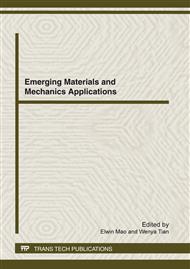p.663
p.668
p.672
p.677
p.682
p.687
p.692
p.697
p.701
Influence of Reduction Temperature of SSI on Nitrate Removal from Wastewater
Abstract:
Spherical sponge iron (SSI) with high activity and intension could be prepared through direct reduction by hydrogen. To optimize the reduction technology of SSI and its removal ability for nitrate from wastewater, the influence of reduction temperature of SSI on nitrate removal was investigated. It was suggested that nitrate removal ability of SSI increased to the summit and then declined with the increasing of reduction temperature. When the reduction temperature of was T4, nitrate removal percentage reached to the maximum. When the original concentration of nitrate was only 5 mg-N/L, the additive quantity of SSI could prove plenty of zero-valent iron in a short time, and reduction temperature of SSI has little influence on nitrate removal. Nitrate removal by SSI appeared to be the pseudo-first-order reaction despite of reduction temperature. While nitrate original concentration was elevated to 50mg-N/L, the reaction order declined to the range of from 0.534 to 0.629 which was closed to 0.5, and the apparent reaction rate constant was 1.411 to 1.773 h-1.
Info:
Periodical:
Pages:
682-686
Citation:
Online since:
March 2012
Authors:
Price:
Сopyright:
© 2012 Trans Tech Publications Ltd. All Rights Reserved
Share:
Citation:


